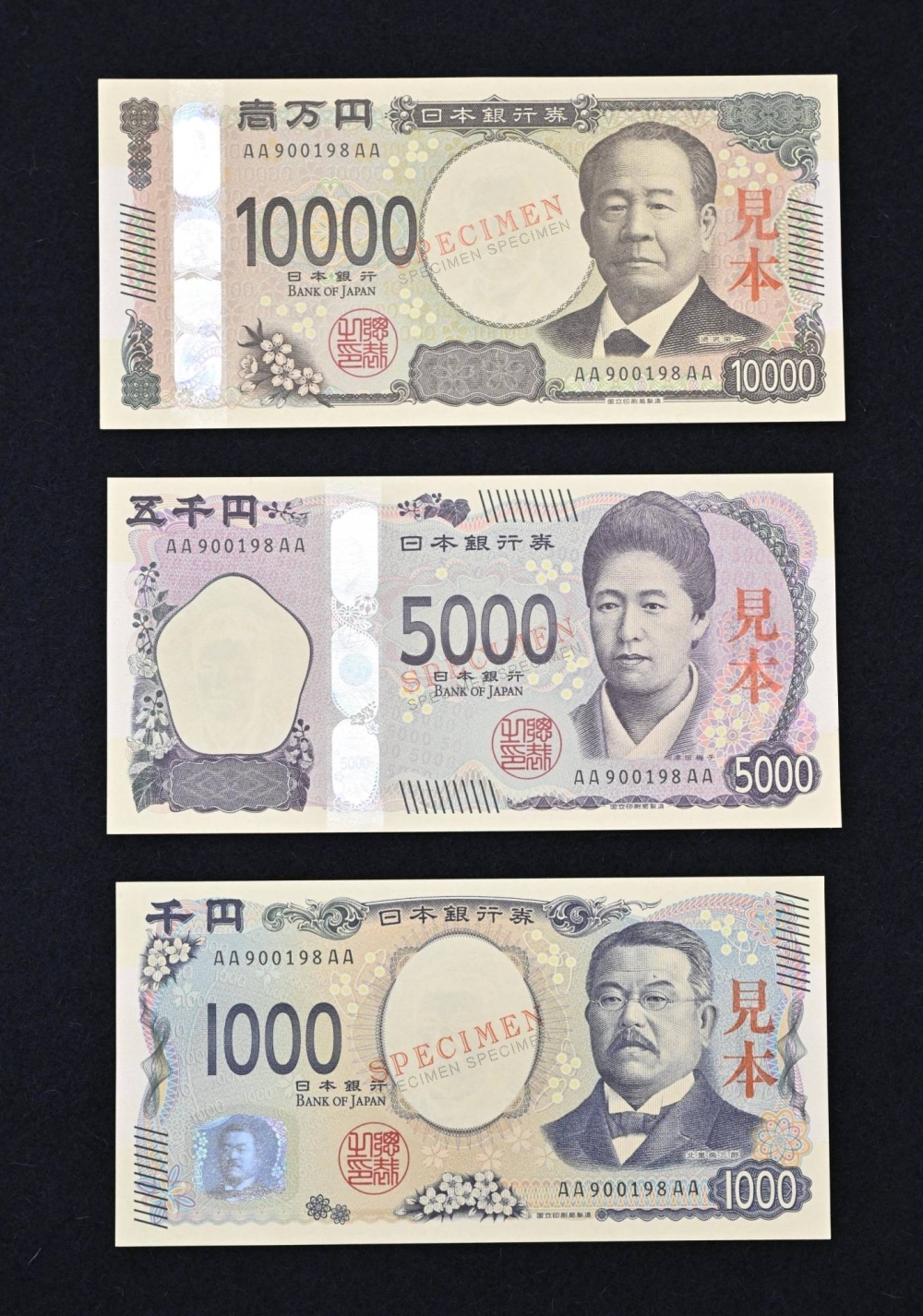Japan will start issuing new ¥10,000, ¥5,000 and ¥1,000 banknotes on July 3, marking the first redesign in about two decades, the Finance Ministry and the Bank of Japan said on Tuesday.
Even after the new bills begin circulating, the current banknotes will remain legal tender.
The ¥10,000 bill will feature Eiichi Shibusawa, known as "the father of Japanese capitalism." Umeko Tsuda, an educator who pioneered women's higher education, will grace the new ¥5,000 bill while the ¥1,000 note will honor microbiologist Shibasaburo Kitasato, who developed a serum therapy for tetanus.
The reverse sides of the three banknotes will show the Tokyo Station building, Japanese wisteria flowers and a work depicting Mt. Fuji by ukiyo-e artist Katsushika Hokusai, respectively. They will include three-dimensional holograms to prevent forgery, the first use on any country's currency.
At the end of December last year, 18.59 billion banknotes were in circulation, which is equivalent to about eight times the distance between the Earth and the moon if they were lined up horizontally, according to the BOJ.




